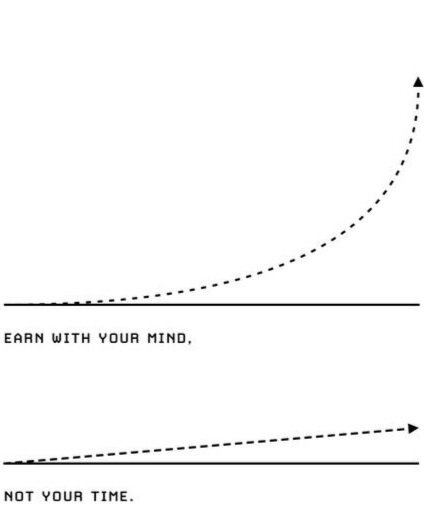2020 will mark the third economic crisis I've been through in my career — the dot-com crash in 2000, the mortgage crisis in 2008, and now the COVID-19 pandemic.
Economic busts are inevitable. And although this one feels a lot different than the first two, in many ways, it also feels the same.
Selling in these kinds of crises can be extremely difficult. Prospects are getting laid off or furloughed. Companies are cutting back on expenses and doing very little new purchasing. Leadership teams are distracted with getting their companies back on track. Getting a prospect's attention can be difficult if not impossible. Finally, the notion of cold calling or pitching your product in this kind of environment can seem trivial or even insensitive.
That said, our companies and our sales team have to get moving again. Standing still is the worst thing for all of us.
Here are some hopefully practical lessons I've picked up during past economic slowdowns that might be helpful as you sort through how to get your sales numbers back on track.
Quickly disqualify 10%-20% of your opportunities. This sounds like a counterintuitive thing to do in a downturn, but it's more important than ever. One of the most important things a salesperson can do is to identify opportunities that are a waste of time. With this downturn, a lot of opportunities that might have looked real a month ago are no longer real. Go find them. Segment opportunities that are more or less likely to buy in this environment. Filter by industry or geography or product or whatever attribute might lead to disqualification. Make a list of your active sales opportunities. Put an X next to any opportunity that you suspect isn't actually interested in buying your product in the near future for whatever reason. Within the next week ask each of these prospects directly if they're interested in buying in the short term. If not, no problem, you'll come back later.
Empathy, empathy, empathy. Empathy is always important in sales. It's even more important now. I'd recommend sitting down for a few minutes, closing your eyes and trying to put yourself in the shoes of your prospect. What's on that person's mind? What are their priorities? What are they scared of? How will they view your product in this new world? What's changed in their day-to-day? Before you make another sales call, really try to get inside their mind. You should also talk to your CFO or members of your leadership team or individuals that buy things within your organization. Ask them how they're thinking about new purchases in this environment? What's their frame of mind? Your first task in a crisis is to get inside the context of your buyer. The person you were selling to a couple months ago is likely a very different person now.
Be 50% more direct. Most buyers are going to be a lot busier than they were a month ago. They'll have less time to talk to salespeople. Respond to that. All of your emails should be less than 100 words. On calls and in meetings, get right to the point. Small talk is fine. You need to be empathetic and understand how the crisis is impacting them, but when you're talking about your deal, get to the point more quickly than you normally would. Focus on movement and when you suspect a lack of interest or a slow down in a deal, call it out. Don't be shy in these times. Ask the hard questions. Be direct.
Position your product as relevant to the crisis (but don't go overboard). Sales of home fitness equipment and computer monitors have exploded over the last couple of weeks while sales of luggage and swimwear have nosedived. The world is different now, and nearly every company is responding. It seems like every company in America has a product to help with the COVID crisis. Some people might find this annoying. I find it inspiring. I love to watch companies fight and scrap to align themselves with the new normal. Find out how your customers are using your product differently in this environment and share that with prospects. But don't embellish. Tell real stories that deliver real value. You know if your product will help in the crisis. And if it does, you should tout that. But be genuine and honest. Spin or inappropriate embellishment in a crisis will backfire.
Help your prospect keep their job. Your buyer likely has some concern about being laid off. Purchasing a new product often creates new value that needs to be implemented and managed. Helping your prospect drive the sale through their own organization can increase the likelihood that they'll stay with their company and, ideally, get promoted. If your prospect sees your product in this light, they'll be a lot more willing to pick up the phone when you call.
Celebrate small wins. Wins can be hard to come by in a downturn. A few months ago, a million-dollar deal may have been cause for celebration. In this environment, a good meeting or even validation that a prospect is still planning to buy your product may be enough to celebrate. Find ways to broadcast these small wins. Do it through Slack, or email, or mention them in a team meeting. Everyone is looking for good news. Share it. Over time these little wins will get bigger and bigger.
Share learnings with your team. There are no experts on how to sell your product in a pandemic. Create a Slack channel or email list where every rep can enter things they've learned that day or that week. After a few weeks, the whole team will be experts.
Give your prospects something. With a little bit of extra downtime, now is the time to double down on drip marketing. Send your prospects data, or an article, or a tweet that you know they'll find interesting. Do the work to find interesting things and share them with your prospects without asking for anything at all in return.
Sharpen your skills. If you do find yourself with some extra downtime, use this time to sharpen your skills. Go back and look at the last few months of sales activity and do some self-analysis. Where are you slowing down? Look at the quality of your sales conversions against your peers — prospect, presentations, proposal generation, negotiating, closing, etc. Find out what you're not doing as well as you could be and focus on improving that. Professional athletes practice way, way, way more than they play games. That's because they have the time. Actual football games happen once a week for three hours. Suddenly you have a lot more time to practice. Do it.
Don't devalue your product. When demand decreases, sellers quickly use price as a lever to keep up the momentum. Don't do this. Your product delivered some amount of value a year ago, and it will deliver the same or more value when we come out of this downturn. Proactive price concessions devalue your product in the eyes of the buyer and weaken sales reps and teams. Raise the bar and find ways to hold your price steady through the downturn. That said, as I wrote above, do be empathetic. Understand the challenges your prospects are facing and respond to them if you can. If they see the value in your product but legitimately can't afford or can't comply with standard contract terms, hear them out and respond if you can. This isn't about being difficult to work with; it's about pushing yourself to keep the bar high for demonstrating the value of your product.
Perhaps the best advice of all is to stay positive. I know from experience that as bad as it seemed at the time, we came out of the downturns in 2000 and 2008 just fine. This one will be no different. Have empathy for your buyer. Amp up your focus. Celebrate small wins. Most of all, keep grinding.
Stay safe.







